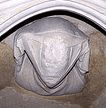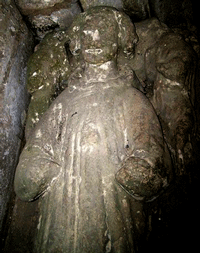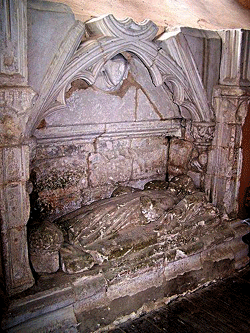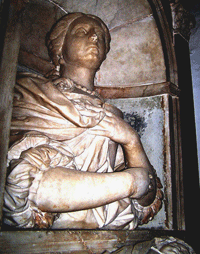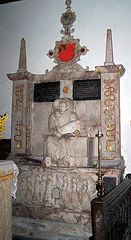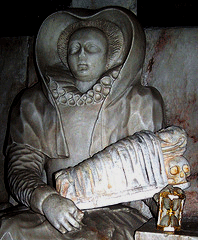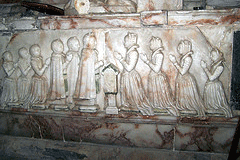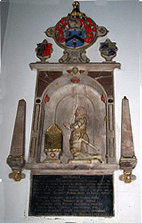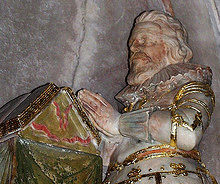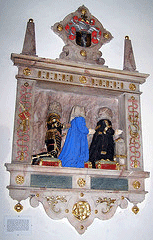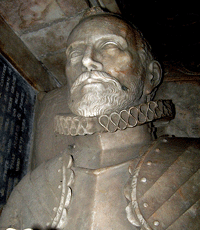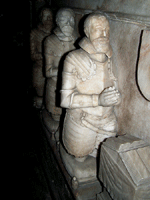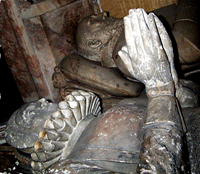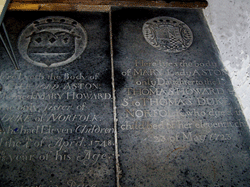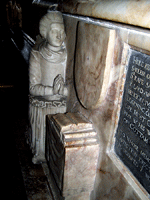|
|
|
|
|
Abbot's Langley
Anstey
Ardeley
Barkway
Benington
Flamstead
Great Hormead
Kings Langley
Radwell
St Albans
Standon
Watton-at-Stone
Willian |
| Abbots Langley - St Lawrence |
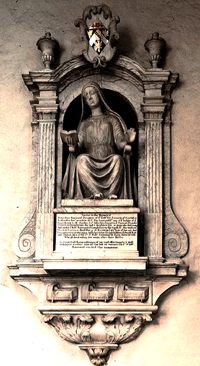 Dame Anne Raymond (1714) Note the three grandchildren in cradles. |
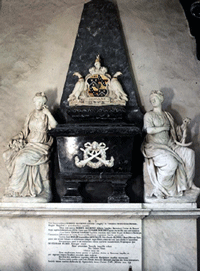 2nd Lord Raymond (1756), by P Scheenmakers |
 1st Lord Raymond (1732), designed by Westby Gill; executed by by Cheere |
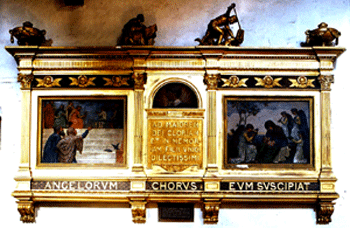 A. G. Armstrong by T. Armstrong |
|
|
||||||||||
 |
Barkway
St Mary Magdelene |
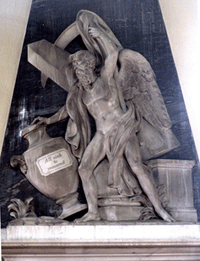 |
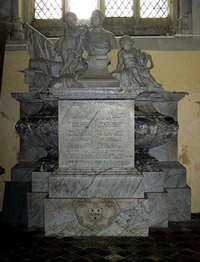 |
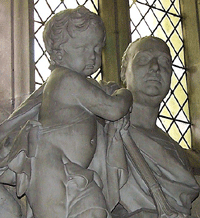 |
 |
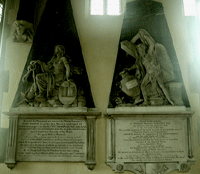 |
|||||
| Thomas Talbot Gorsuch (1820) (left and centre) & James Andrews (1796) (right and centre). Epitaphs by P Chenu. Friends who each left interest on £300 to the poor. | Hon Sir John Jennings (1743) by J M Rysbrack. (signed) Rear Admiral, Governor of the Royal Hospital, Ranger of the Park at Greenwich, MP etc. 'George Jennings Esq, his only son by Alice daughter of Francis Bacon Esq of Wallington,hath caused this monument to be erected...' | Rt Hon Lady Susan Clinton (1829), wife of Lt Gen Sir Henry Clinton. | |||
 |
Benington - St Peter |
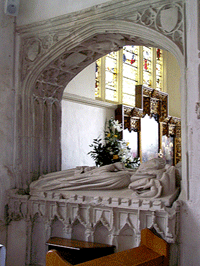 |
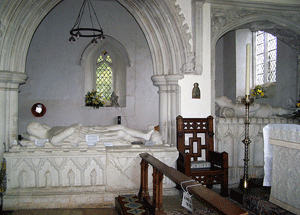 |
||
| John de Benstede | John de Benstede & Edward de Benstede | Joan (Joanne) Benstede |
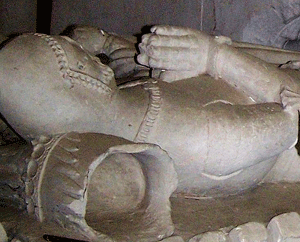 |
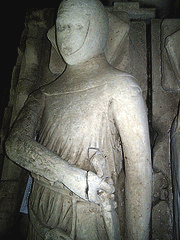 |
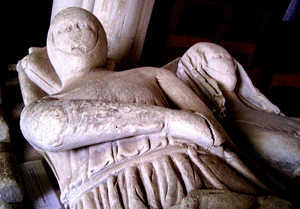 |
 |
| Edward de
Benstede (1432) Joan can just be seen behind |
John de Benestede (1359) & Petronilla Moyne (1378) | ||
| Flamstead - Saint Leonard |
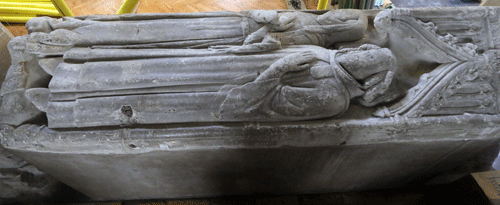 |
|
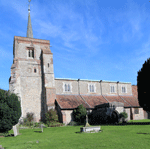 |
 |
|
| Church open Park in road outside O/S Ref: TL 079 146 |
Double tomb with stone effigies. Note the gablet. c. 1420 . | |
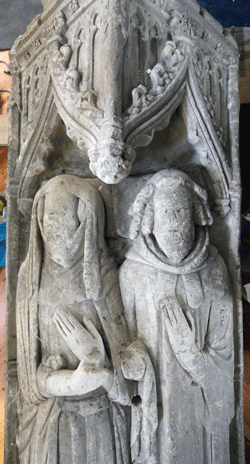 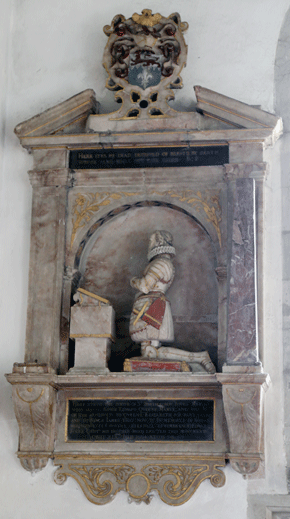 |
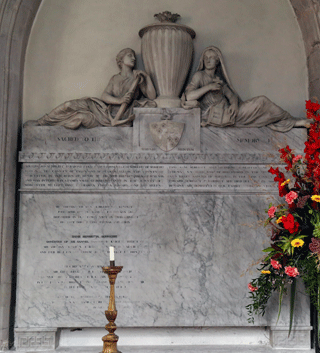 |
|
| Far left: A bird's eye view of the
double medieval tomb showing positions of the hands and
structure of gablet Left: Sir Batholomew Fouke (1604) Alabaster and marble Above: Sir Edward Sebright by Flaxman (1782) Hope and Faith recline by urn |
 |
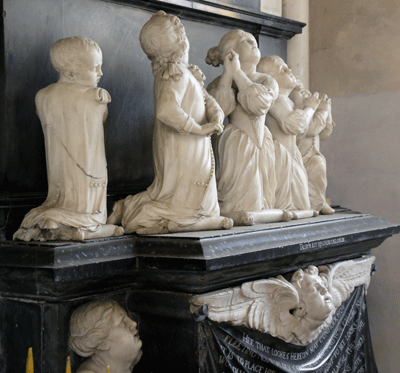 |
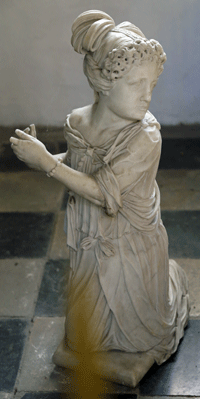 |
|
The Saunders Children. Black and white monument
erected c. 1690. Five deceased children kneel on the ledge while
the sixth surviving child kneels on the floor. By William
Stanton The higher inscription is in Latin and gives the names of the children but not the dates, viz. Thomas, Robert, Helena, Helen and John; the surviving child was Anne. They were the children of Thomas and Helen Saunders. Two putti support the ledge and a winged cherub holds a draped black 'cloth' with an inscription in English. |
||
| Unfortunately the church was undergoing restoration when I visited so I was not able to gain access to the brasses nor take the photograph of the Saunders Children monument from a better angle |
 |
Kings Langley - All Saints |
 |
| Church is open and you can park in the road outside; there are a few dedicated church parking spaces too. We found the church difficult to find but then we entered the village from the 'wrong' direction: set Church Lane (of course!) on your satnav. O/S Ref: TL 074 025 |
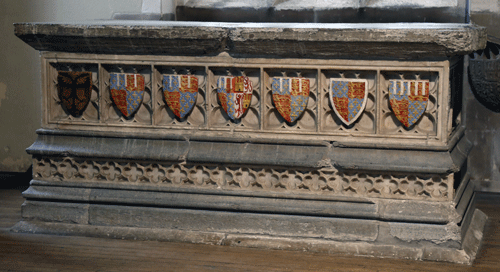 Edmund
of Langley, First Duke of York (1402) He was born
(1341) and died in Langley Palace and was originally buried in
the priory church with his wife Isabella of Castile. Alabaster
on a plinth of Purbeck marble. The tomb
was moved to the parish church in 1574, following the
Dissolution of the Monasteries.
There are now thirteen shields but there were
originally another
seven on the opposite long side, now lost. Edmund
of Langley, First Duke of York (1402) He was born
(1341) and died in Langley Palace and was originally buried in
the priory church with his wife Isabella of Castile. Alabaster
on a plinth of Purbeck marble. The tomb
was moved to the parish church in 1574, following the
Dissolution of the Monasteries.
There are now thirteen shields but there were
originally another
seven on the opposite long side, now lost. The arms are - from our left to our right: 1. Charles IV, Holy Roman Emperor and father of Anne of Bohemia, Queen of Richard II. 2. Edward, The Black Prince, first son of Edward III 3. Lionel of Antwerp, Duke of Clarence, third - but second surviving son - of Edward III 4. Edmund of Langley quartered with his first wife, Isabella of Castile, daughter of Pedro 'The Cruel' king of Castile and Leon. Her elder sister married John of Gaunt. 5. Edmund of Langley, Duke of York, fifth - but fourth surviving son, of Edward III 6. Thomas of Woodstock, Duke of Gloucester , eighth - but fifth surviving son of Edward III. 7. Henry of Bolingbroke, Duke of Hereford, son of John of Gaunt, fourth - but third surviving son of Edward. He became king as Henry IV. On the (our) left side are the arms of Edmund the Martyr, King of East Anglia; King Edward the Confessor; and King Richard II. On the (our) right side are the arms of Thomas of Holland, Earl of Kent, stepson of the Black Prince; his brother, John of Holland, Duke of Exeter; and Richard Fitzalan, Earl of Arundel. |
| The Rise of the Roses or So Many Children No One Knew What To Do |
|
The trouble was that
King Edward III had too many children. It wasn't just that, of
course: there was also the tendency for heirs to
predecease their fathers and for boy kings to succeed to the
throne.
Salic Law
did not apply in England but
primogeniture certainly did, although it seems no one knew
quite how to interpret it. The lawyers should have had a field day but
the rulers of England were martial men and had a number of
other sorts of field days. |
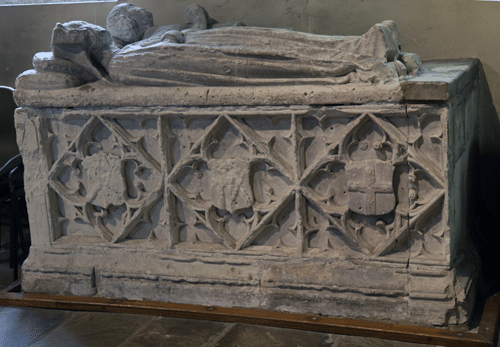 |
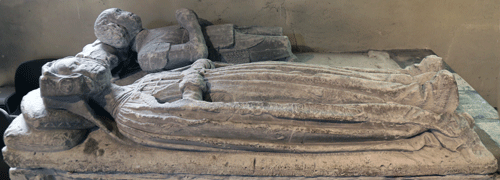  |
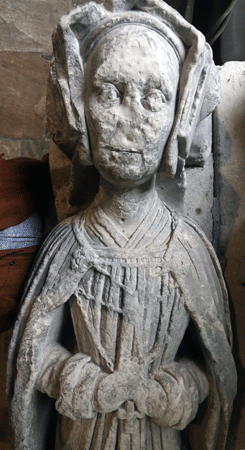 |

Sir Ralph Verney (1528) & Eleanor (de la Pole).
Note the chains, clasps and necklaces and the
lady's effigy and the heraldry carved in relief.
|
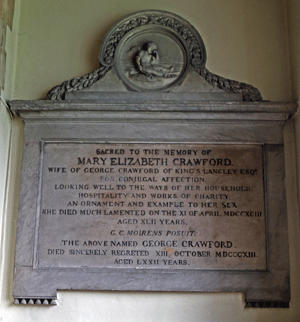 |
 |
 |
 |
| Mary Elizabeth Crawford (1793); signed: Bonomi (inv.) & Westmacott (sculp.) | John Carter (1588) and his two unnamed wives and children. By the first he has four sons and five daughters and by the second five sons and four daughters. | Brasses to two unamed ladies: 1528 and 1578, the latter a palimpsest. | |
|
|
|||||||||||||||||||||
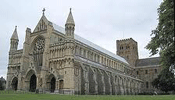 |
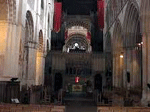 |
St Alban's Cathedral |
 |
 |
| St Alban's is a Cathedral of the Modern Foundation. Before the Reformation it was a Benedictine Abbey (and is often referred to as St Alban's Abbey), then a parish church; it was given cathedral status in 1878. No entrance fee: no photograpy fee. Park in one of the pay car parks in the City - good multi-storey nearby. |
| Chantry Chapels & Shrines | 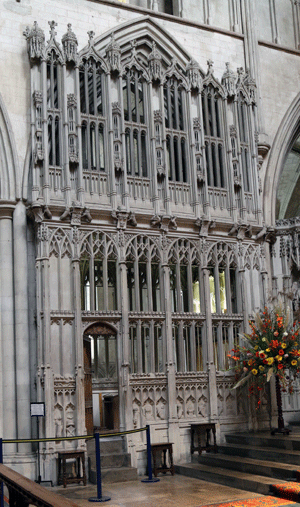 |
 |
 |

Above then left to right:
Chapel of Abbot Wallingford (1484) Chapel of Abbot Ramryge (1519) Shrine of St Alban c. 1302-08. Destroyed at Dissolution; its 2,000 found 1872 and reconstructed. Purbeck Shrine of St Amphibalus Clunch mid 14th century; only base remains. Reconstructed 19th century. |
| Medieval Tombs |
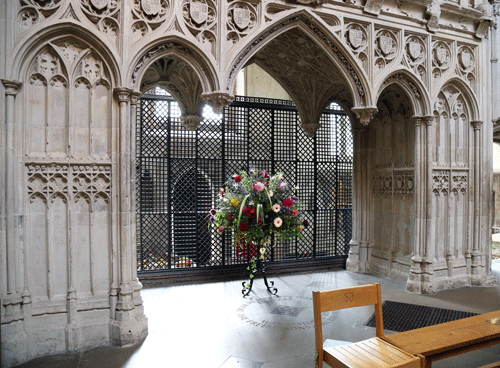
|
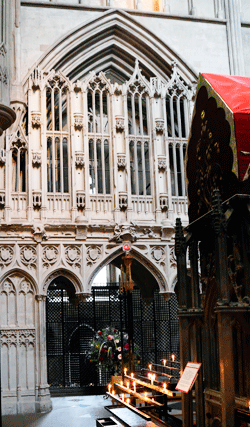 |
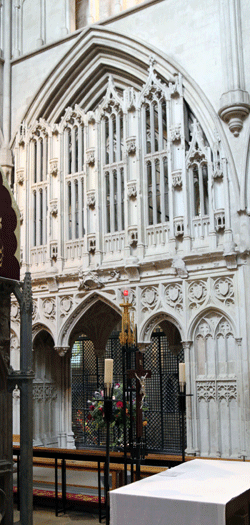 |
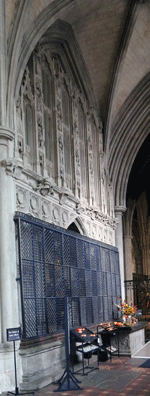 |
| The iron grill dates from the late 13th century. Below the floor level is a tomb chamber with the Duke's coffin; it has a wall painting of the Crucifixtion. |
| Humphrey, Duke of Gloucester |
|
Humphrey, Duke of Gloucester (1390-1447) was the youngest, and longest lived, brother of King Henry V, being the fourth son of Henry IV and Mary de Bohun. He was scholarly, cultured and a patron of the arts and learning. Unlike his brothers he was not naturally courageous but gained a reputation as a successful commander during his elder brother's war in France, where his knowledge of siege warfare, gained from a classical education contributed to the fall of Honfleur. He was also an effective diplomat and politician, as well as being popular with the Londoners and commoners. On the premature death of his brother, Henry V, he claimed the regency of England but this claim was opposed by the council, especially by his uncle, Cardinal Henry Beauford, Bishop of Winchester; Gloucester therefore was only awarded the position of protector. A will discovered as late as 1978 in fact supported Duke Humphrey's claim. He fist married a noted beauty, Jacqueline of Hainault, in 1423 but this marriage was annulled in 1428. He then married his mistress, Eleanor Cobham, in 1441; she was arrested for sorcery and heresy which led the Gloucester's retirement from public office. He was arrested on charges of treason in 1447 but died three days later, probably from natural causes although there were suspicions of murder at the time. |
| Tomb Chests & Niches |
 |
 |
 |
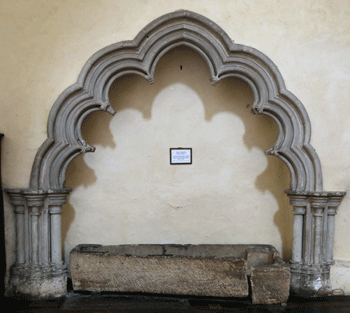 |
| Apart from the chantries,
shrines and Duke Humphrey's tomb St Alban's is not rich in
medieval monuments; apart from the examples above there are only
the following, from left to right: 1. Altar tomb with slab of Frosterely marble. On sides, indents of 3 figures, inscription and 3 shields (RCHM) No identification and used as occasional table 2. Is this the 'rough altar tomb with plain slab' (RCHM)? I expect it wasn't hidden by the radiator in 1910! 3. Two stone coffins. Note: These coffins would not have been carried, of course, but set flush into the ground and the shrouded body lowered into them; this is recorded when the contemporary chroniclers tell the gruesome tale of William the Conqueror's funeral at Caen. The coffin would then have been covered by a stone slab with various carvings in relief or incised, such as that of a cross, sword, shears, shield, helmet, lettering, effigy and other devices. 4. A tomb niche with an another unrelated stone coffin. Late 13th century. Said to be the grave of two hermits However there is a remarkable collection of brass and brass matrices, some on the floor, often wisely covered by carpets (removable, of course) while others, often fragmentary, have been excellently mounted on the wall. |
|||
| Medieval Brasses & Matrices |
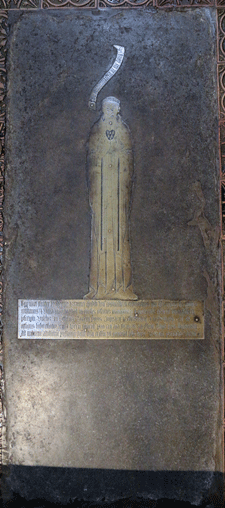 |
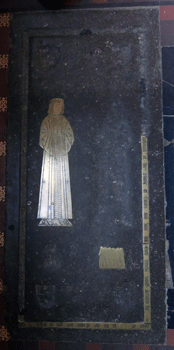 |
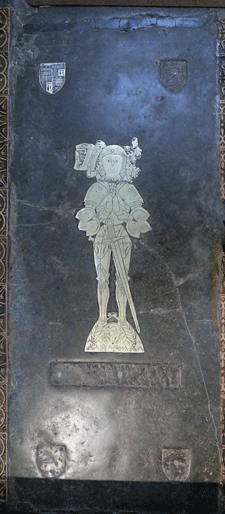 |
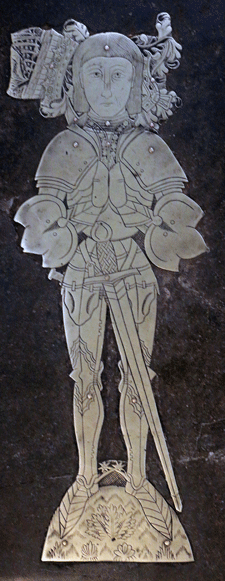 |
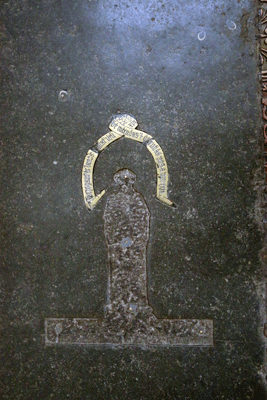 |
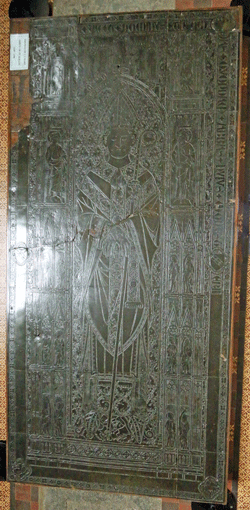 |
| R. Beaver (c.1460) Monk holding heart |
Sir Anthony Grey (1480) | ||||
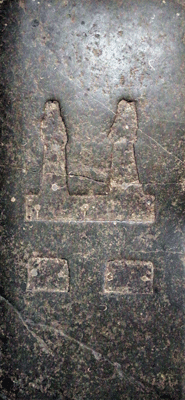 |
 |
 |
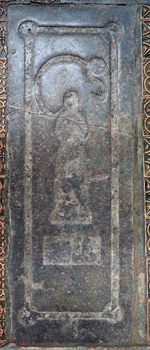 |
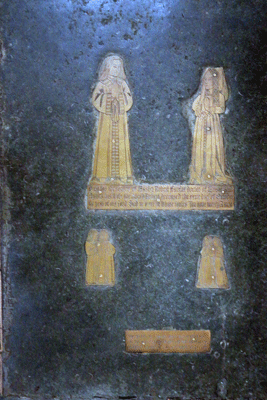 |
|
| Medieval Effigial Brasses (& some later plates) now Wall Mounted |
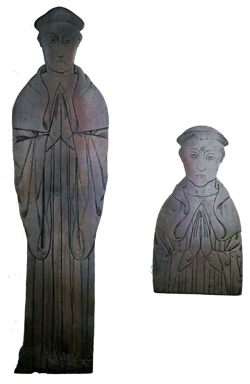 |
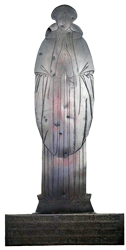 |
 |
 |
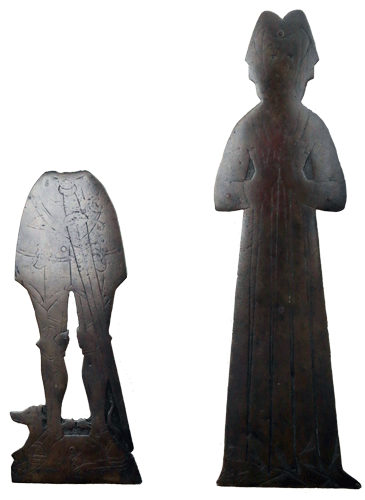 |
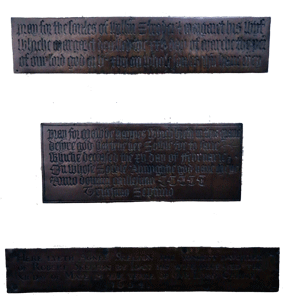 |
|
Unknown monks c.1440
|
Thomas Rutland (1521) Subprior |
Ob: Abbot William Albon (1476)
Rev:unknown lady |
Male Civilians 1465-70
|
Batholomew & Florence Halley
(1465) |
William & Margaret Stroder 1517
Mawde Harryes 1537 Anges Selton 1604 |
| Post-Medieval Monuments - Tomb Chests |
 |
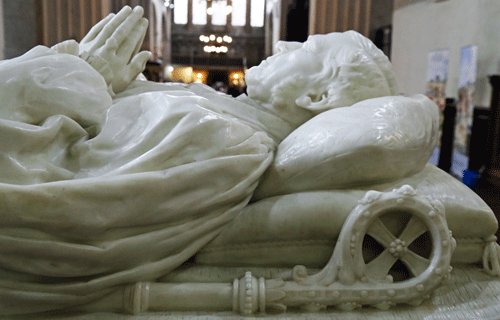 |
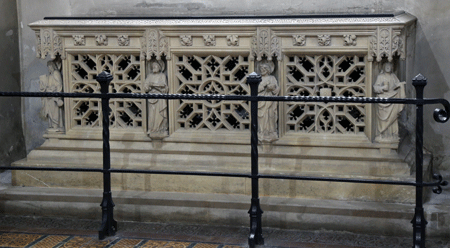
Alfred Blomfield DD (1894) Bishop of
Colchester and first Suffragen Bishop of St Albans.
|
|
| Above & right: Bishop T. Legh Claughton
(1895). First Bishop of St Alban's Alabaster tomb chest with marble effigy. Designed by Oldrid Scott; figure by Forsyth. |
| Wall Monuments |
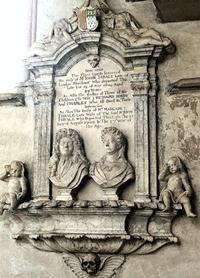 |
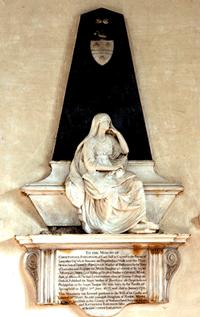 |
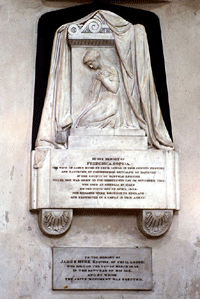 |
 |
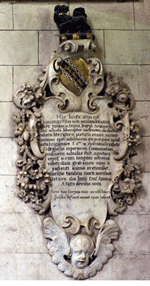 |
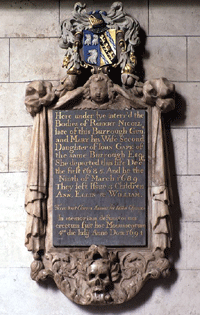 |
| John Thrale (1704) | Christopher Rawlinson (1733) by William Woodman. Figure is of History |
Frederica Mure (1832)
by Chantrey |
Ptolemy James
(1729) & Charles James (1695) |
John Gape (1701) | Robert (1689) &
Mary (1685) Nicholl |
 |
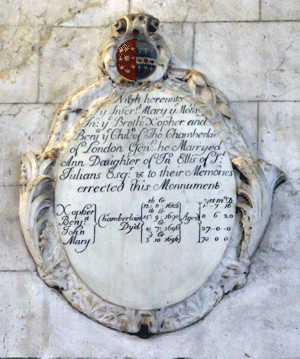 |
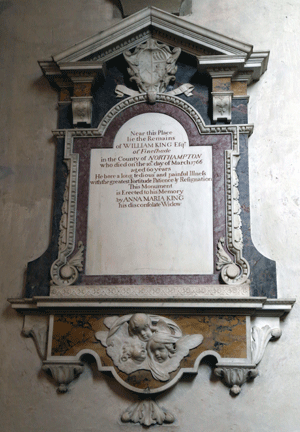 |
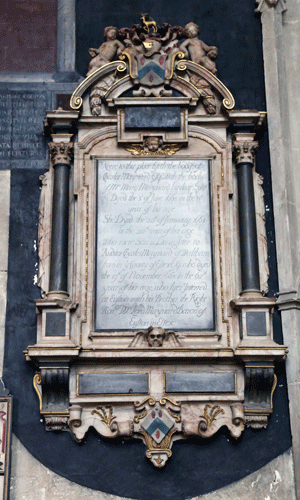 |
 |
 |
| Barbara Griffith (1773)
;
added below: Barbara onley daughter of the said Mrs Griffith dyed...1679 and lyes here likewise buried |
χopher (1682@19m), Benjª (1690@6m), John (1696@27), Mary (1696@70) Chamberlaine. Relationships are incomprehensible. | William King (1766) | Charles (1665) and his sister Mary (1663) Maynard. And their father Charles (1665); he was buried at Euston | Lt Col Fanshaw William
Gostling (1874) 'a right good soldier' |
Jane Nicholas (1708) The monument records that in her will she left a legacy for the poor of the parish and to the parson to preach an annual sermon |
 Above, top left then clockwise: William (1805) & Mary (1811) Coleman; Zipporah Sierra (1803), her mother and 'many relatives'; John Jones Wallus (1686) Latin script; Mary Ann Coleman (1808), daughter of above; illegible brass. |
 |
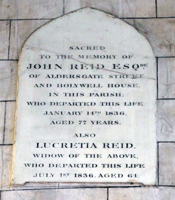 |
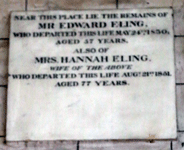 |
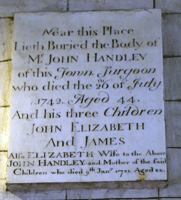 |
 |


 |
|||||
| Right
top row left to right: 1.
Mary Tippet (1815) 'in the family vault of
Henry Pye Rich are deposited the remains of...' 2. John
(1836) & Lucretia (1836) Ried. 3. Edward (1850) & Hannah (1861)
Eling. 4. John Handley (1742) surgeon & wife
Elizabeth (1781): their children:
John, Elizabeth & James. 5. Rev John Payler
Nicholson (1817) Headmaster of Free Grammar School, St Albans; &
wife Hannah (1844) Right bottom row left to right: 1. Henry Pye Rich (1809) 'late of of His Majesty's commissioners under the 6th article of the treaty of peace between GB and USA' 2. Edward Carter (1687) Prebendary of St Paul's London 3. Joseph Handly MD JP (1728) Many years mayor. |
|||||
| Busts |
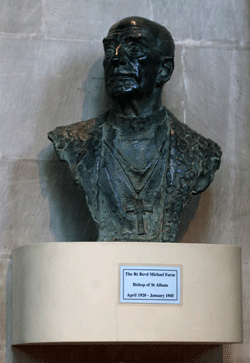 |
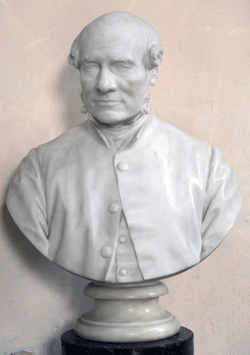 |
 |
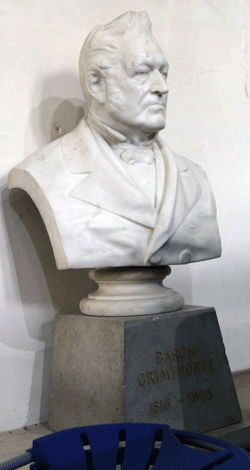 |
| Rt Rev Michael Furze (1945) Fourth Bishop of St Albans |
Rt Rev John Wogan Festing (1902) Second Bishop of St Albans |
Very Rev Walter John Lawrence DD
(1914) First Dean of the Cathedral |
Edmund Becket,
1st Lord Grimthorpe (1905) Q.C. horologist and architect |
| Lord Grimthorpe was responsible for the rebuilding the west front, roof and transept windows of the cathedral; he work was considered out of keeping. His name has passed into the English language as the verb to grimthorpe, meaning to restore an ancient building unsympathetically. |
|
||||||||||||||||||||||
| Watton-at-Stone - St Andrew & St Mary |
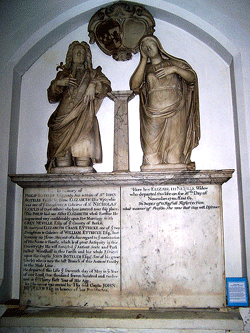 |
||
 |
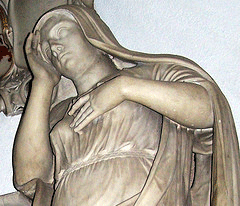 |
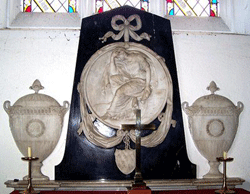 |
|
| Philip (1712 age 30) & Elizabeth (1740) Boteler | Sir Thomas Rumbold (1791) by Bacon | ||
| 'Philip Boteler Esq only
son and heir of Sir John Boteler knight by Dame
Elizabeth his wife who was one of ye daughters and
coheires of Sir Nicholas Gould of Dorset, who lyes
interred near this place. 'This Philip had 1 sister Elizabeth whose fortune he agumented very considerably upon her marriage with Grey Neville Esq. 'He marryed Elizabeth Crane Ettricke 1 of ye 2 daughters and coheires of William Ettricke Esq but leaveing no issue, he (out of due regard to yer continuation of his name and family, which is of great antiquity in this county, by his will entayled ye antient seate and park called Woodhall...upon his cousin John Boteler Esq son of his great uncle who is now the last branch...in the male line. 'This monument was erected by his said cousin John Boteler Esq in honour of his benifactor. 'Here lies Elizabeth Neville, widow....In hopes of joyfull resurrection: what manner of person she was that day will discover'. |
|||
 |
Willian - All Saints |
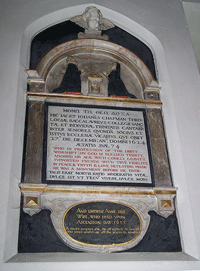 |
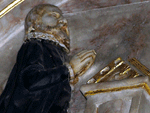 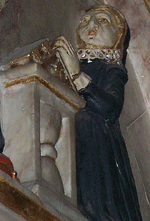 |
 |
 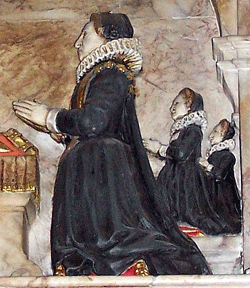 |
 |
|||||
| Above: Thomas Wilson (1656) & Lucy | Above: Rev John Chapman (1624) & Anne (1633) 'He was a monument before he dyde' 'A double surgeon she oft restored to health the pined wretch, as oft the poore to wealth' | Above & right: Edward Lacon (1625) & Joanna (née Gray) (1624) 2nd wife of Edward Wilson | |||


